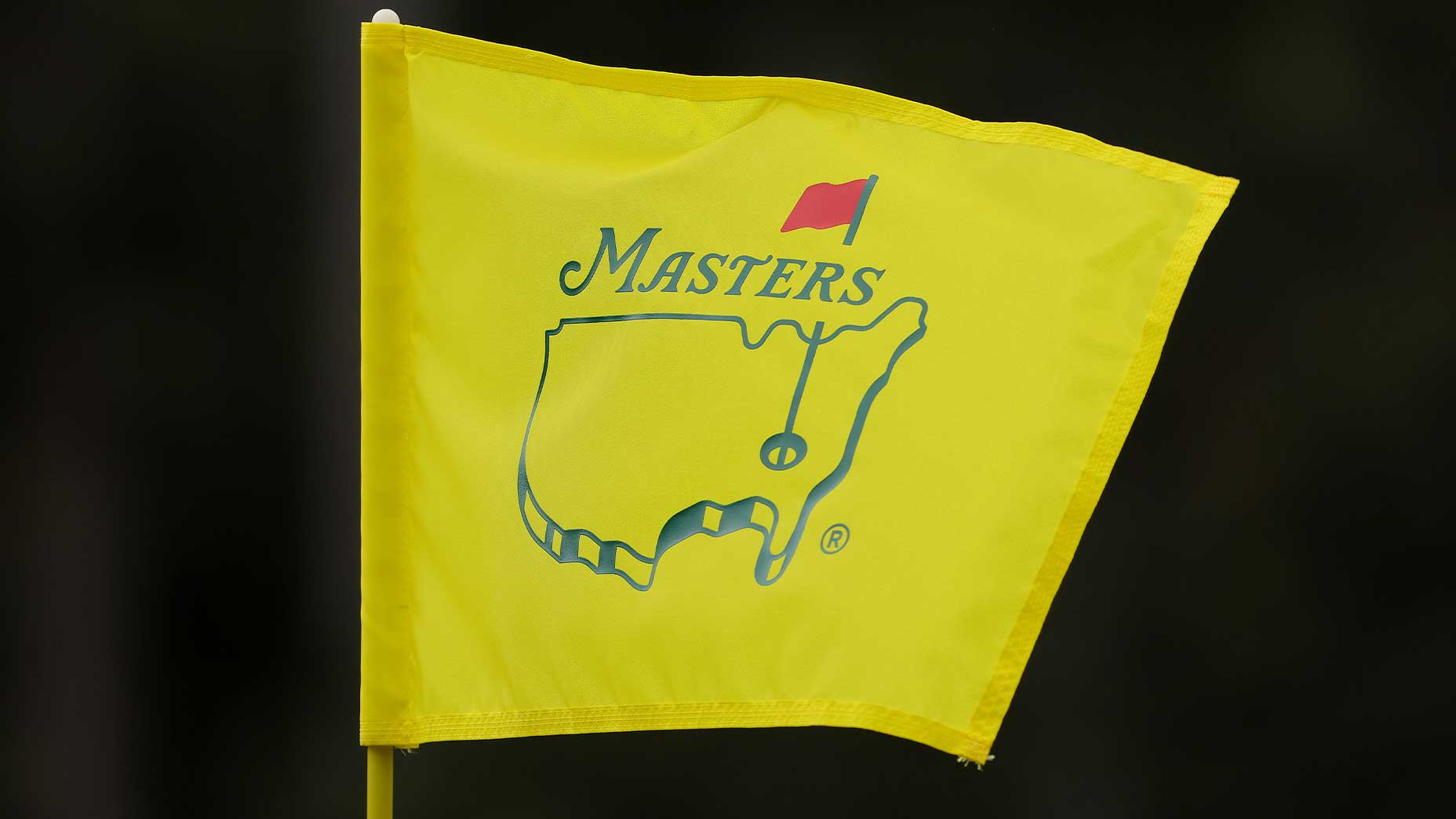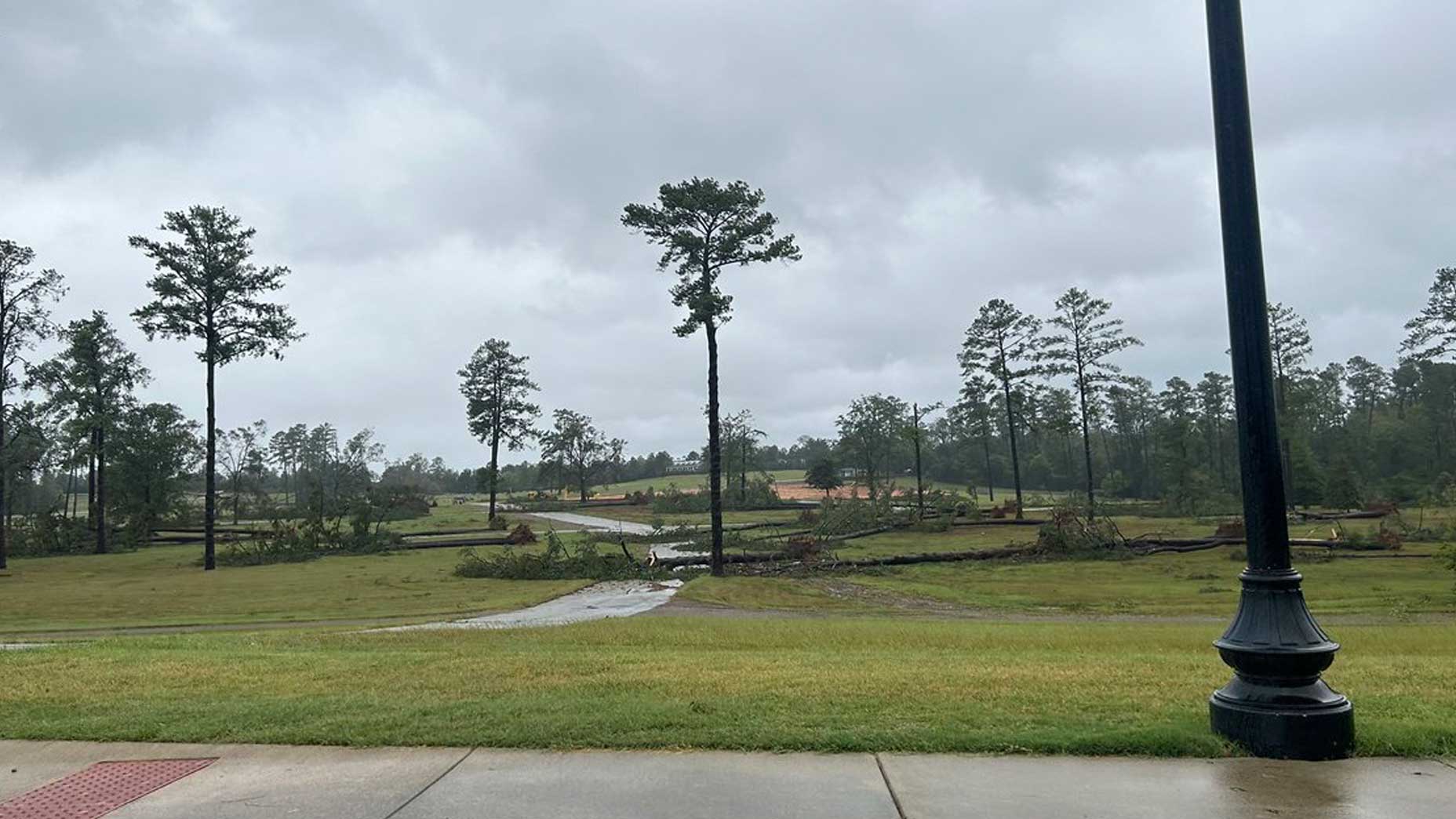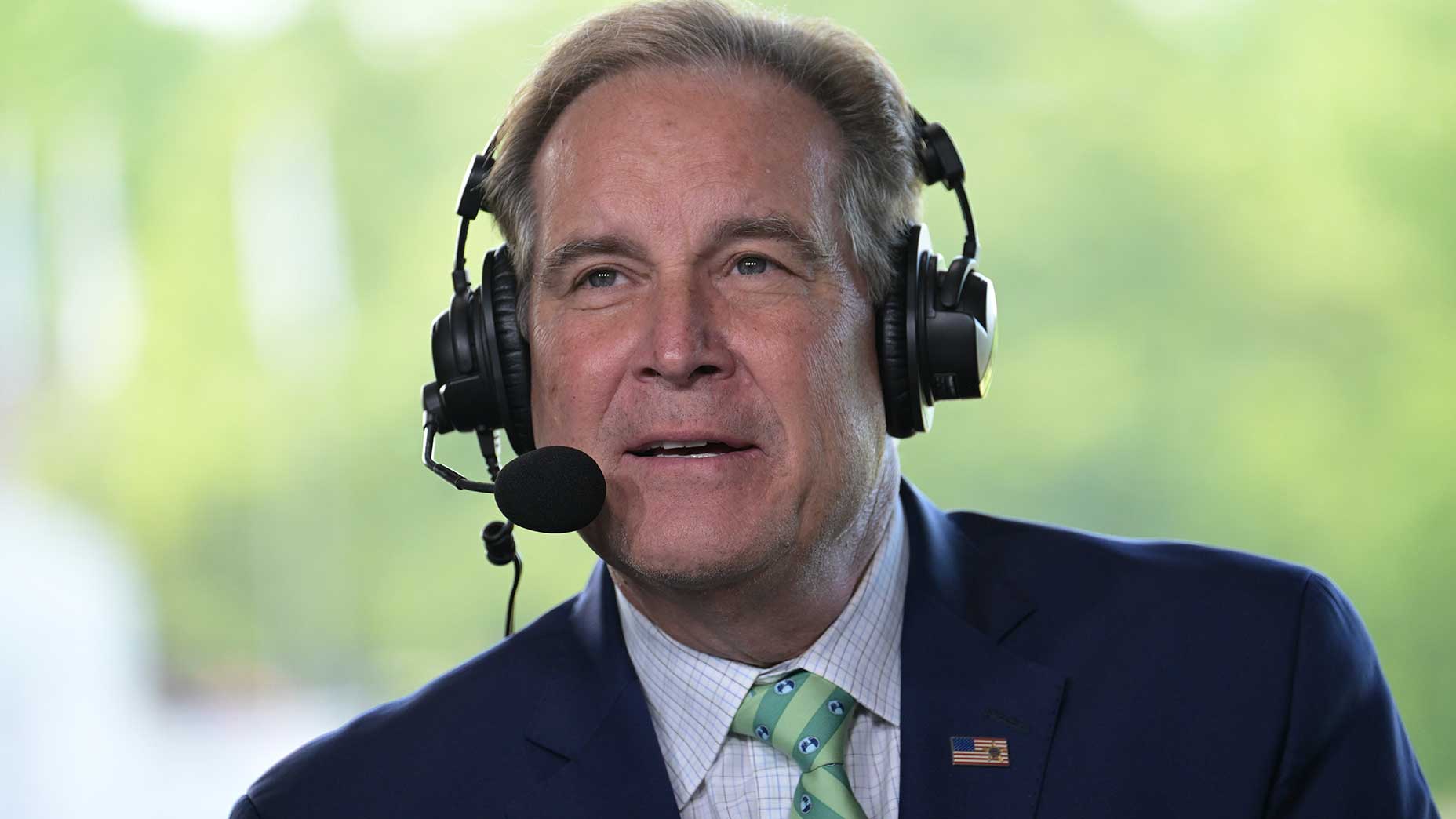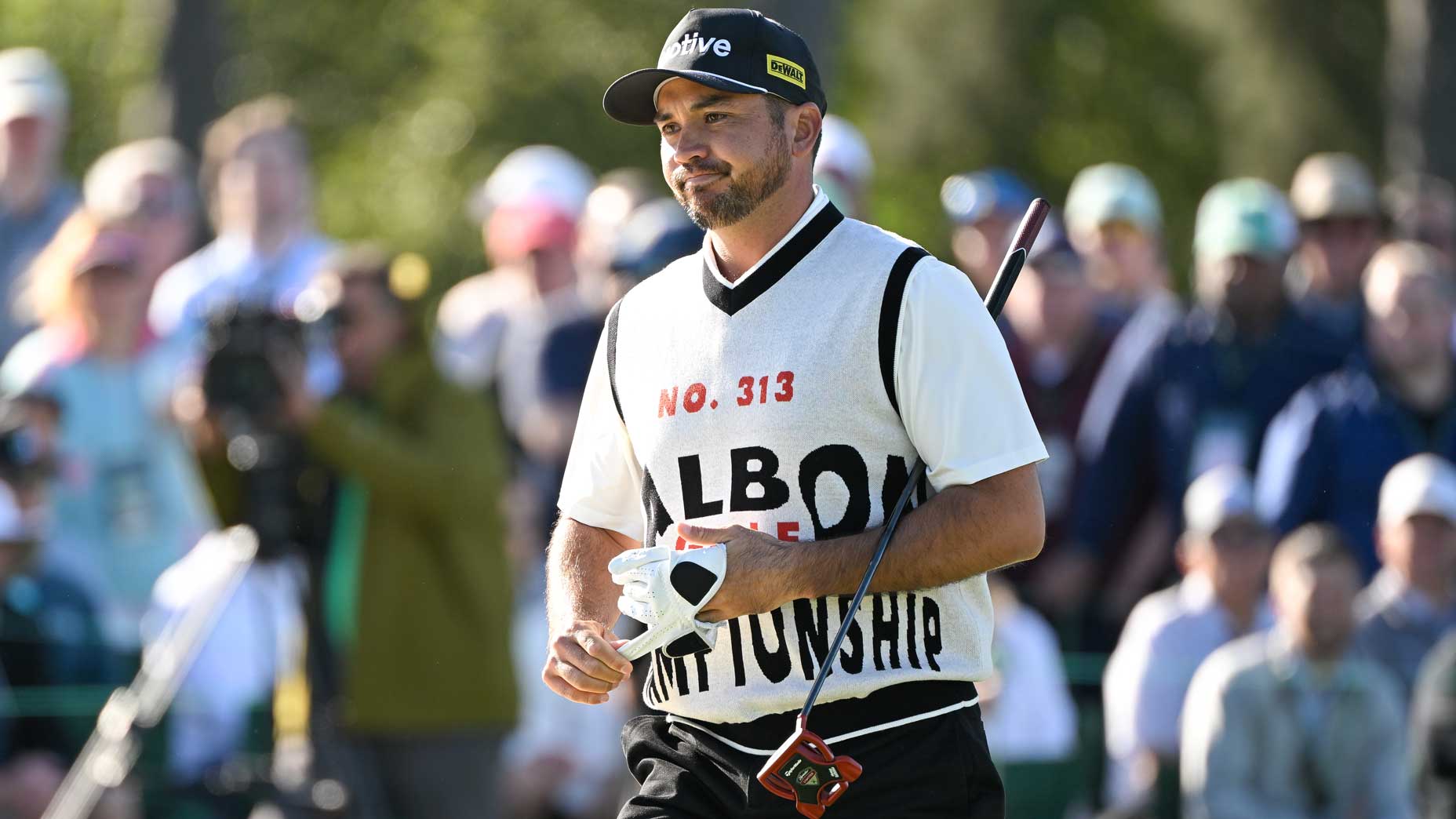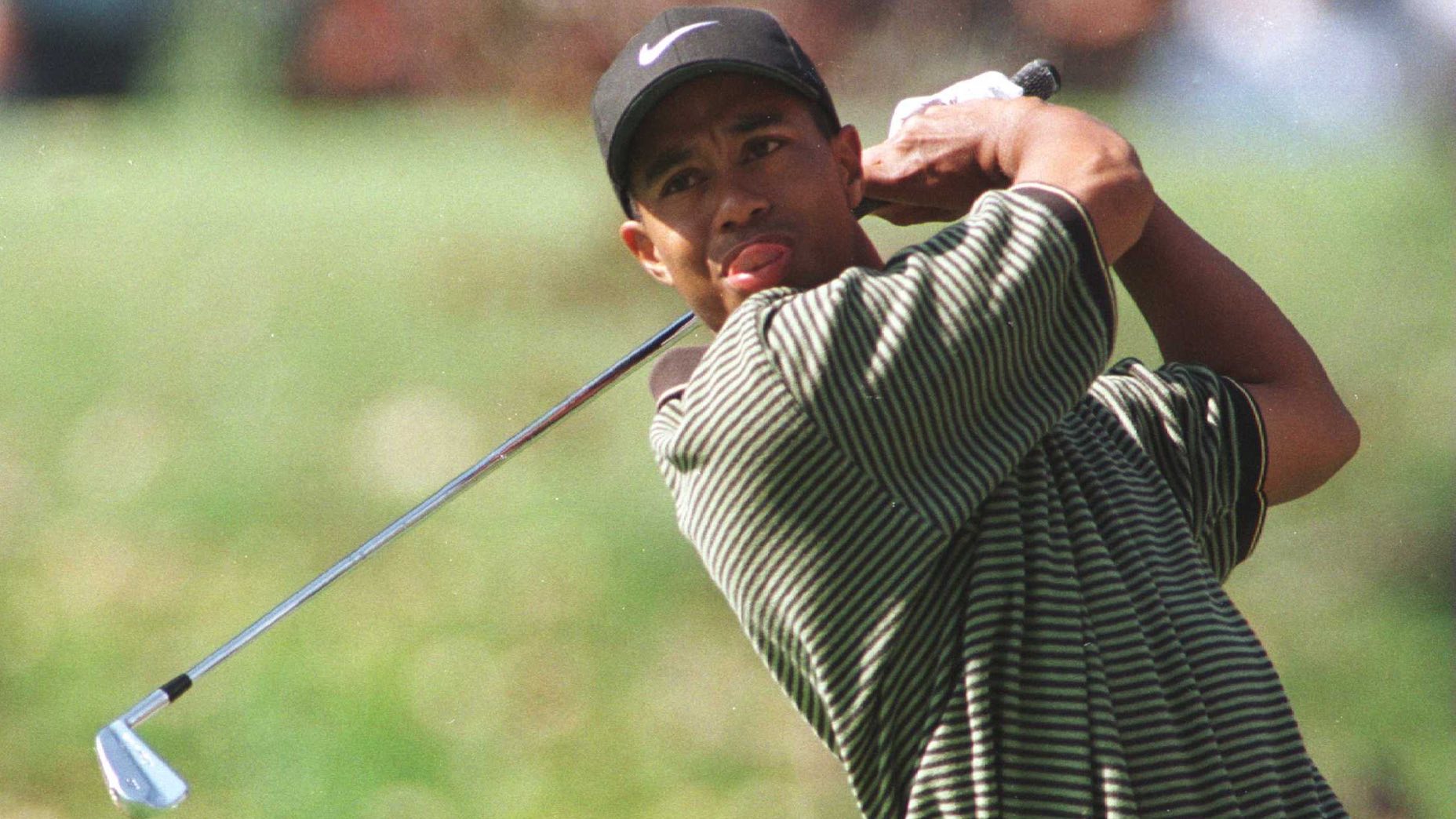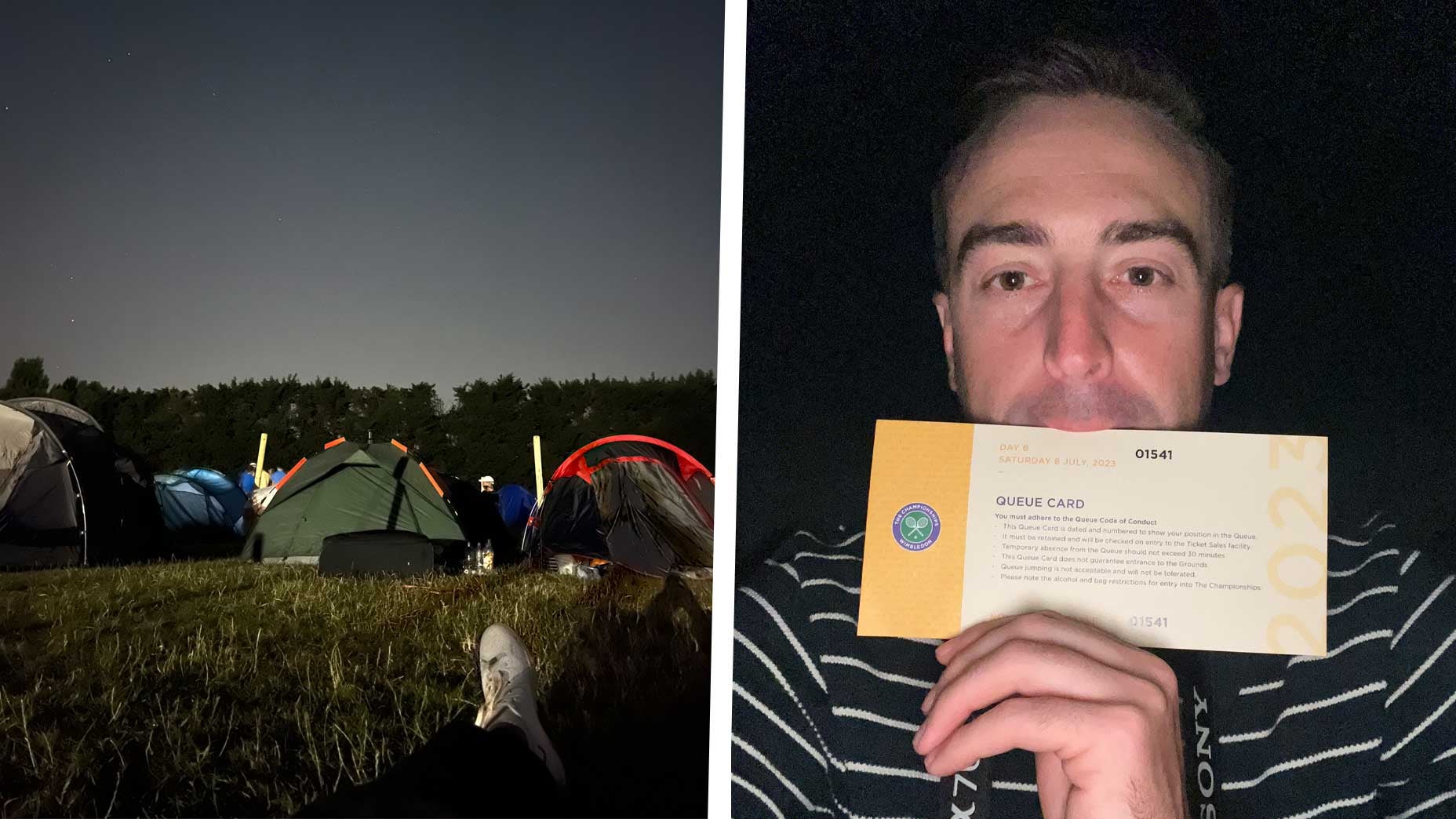The Masters should never play longer than this yardage, chairman says
- Share on Facebook
- Share on Twitter
- Share by Email

Augusta National chairman Fred Ridley looks on during the first tee ceremony prior to the first round of the 2023 Masters.
Getty Images
Fred Ridley has drawn a line in the sand. Make that a line in the turf. 8,000 yards. That’s the cutoff, the chairman of Augusta National Golf Club said. If he gets his way, the Masters Tournament will never be played from tees that stretch any longer than that.
Ridley made that clear on Wednesday morning, in his annual meeting with the press, which he kicked off in familiar fashion. He said it was an honor to serve as chairman of the club and the tournament. He mentioned important milestones for the Augusta National Women’s Amateur and the Drive, Chip & Putt championship, which marked their 5th and 10th anniversaries, respectively, this year. He tipped his cap to the defending champ, Jon Rahm.
And then he turned his attention to the golf course, which, he said, was yet again in “exceptional condition” and yet again had been tweaked “to ensure it continues to challenge the best players in the world.”
“Adding distance to the Augusta National golf course has become standard operation over the past two decades,” said Ridley, who noted that for 70 years, the Masters was played at 6,900 but that the course now measures 7,550 yards from the tournament markers with the potential to play at more than 7,600 yards this year.
But how much more stretching can Augusta National take?
“I’ve said in the past that I hope we will not play the Masters at 8,000 yards,” Ridley said. “But that is likely to happen in the not too distant future under current standards. Accordingly, we support the decisions that have been made by the R&A and the USGA as they have addressed the impact of distance at all levels of the game.”
Those decisions, of course, involve the governing bodies’ proposed golf ball-rollback plan, which, if adopted, would take effect at the elite level of the game in 2028 and at the recreational level in 2030.
Since its announcement, last December, the rollback proposal, which the governing bodies say would reduce driving distance for the longest hitters by roughly 5 percent, has drawn mixed reactions, with equipment-makers voicing some of the loudest opposition and prominent players such as Tiger Woods and Rory McIlroy expressing their support.
Given the weight that Augusta National and the Masters carry in the game, Ridley’s comments on the rollback count as an influential endorsement.
Why Fred Ridley is an Augusta National chairman unlike any otherBy: Michael Bamberger
As the only major championship that is played at the same venue every year, Augusta National stands as a prominent testing ground in the battle between modern technology and tradition. In the 80 years since the inaugural Masters, the course has been altered on myriad occasions. But those changes have only picked up pace in recent decades, particularly since 1997, when Woods ran off to a record-setting Masters victory while playing Augusta’s fabled back-nine par 5s with as little as a driver and a wedge.
They also come from a source who has had a close-up view of the effects of distance on the game.
“Tiger-proofing” has since become a buzzword in the game and a practice adopted at Augusta National, which has since lengthened all four of its par 5s. The most recent of those changes is on the par-5 2nd hole, which has a tee 10 yards farther back for the first time this year.
Augusta National has done its best to defend against the game’s longest bombers. But it can only do so much.
In his press conference Wednesday, Ridley indicated that failing to address the distance issue on a broader scale “would cause a great deal of stress in the game, which it doesn’t need right now.”
Among the questions he was asked was whether he thought the proposed rollback went far enough.
“As I understand, and I don’t think it’s across the board, but I mean, if you use 5 percent as an approximate number, a player hitting it 320 yards is going to lose 16 yards,” Ridley said. “So, I mean, that’s not insignificant.
“What we found, though, over the years is that we lengthen the golf course, everybody says it’s really long, and then two or three years later it’s not so really long.”
Time marches forward. Technology does, too. But there will come a point when enough is enough.
“I think we have some time to look and see what’s going to happen,” Ridley said. “We have some more room, but we don’t have a lot. So I’m holding to that 8,000-yard red line, and I just hope we never get there.”
Latest In News

Josh Sens
Golf.com Editor
A golf, food and travel writer, Josh Sens has been a GOLF Magazine contributor since 2004 and now contributes across all of GOLF’s platforms. His work has been anthologized in The Best American Sportswriting. He is also the co-author, with Sammy Hagar, of Are We Having Any Fun Yet: the Cooking and Partying Handbook.




